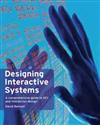| FindBook |
|
有 1 項符合
Benyon & Phil Turner & Susan Turner的圖書 |
 |
$ 1215 ~ 1240 | Designing Interactive Systems 2/E
作者:Benyon & Phil Turner & Susan Turner 出版社:全華圖書股份有限公司 出版日期:2010-04-01 語言:繁體書  共 3 筆 → 查價格、看圖書介紹 共 3 筆 → 查價格、看圖書介紹
|
|
|
內容簡介
目錄
Contents
Guided tour
Preface
Publisher’s acknowledgements
Part 1: Essentials of designing interactive systems
Ch1: Designing interactive systems
Ch2: PACT: a framework for designing interactive systems
Ch3: The process of human-centred interactive systems design
Ch4: Usability
Ch5: Experience design
Ch6: The Home Information Centre (HIC): a case study in designing interactive systems
Part 2: Techniques for designing interactive systems
Ch7: Understanding
Ch8: Envisionment
Ch9: Design
Ch10: Evaluation
Ch11: Task analysis
Ch12: Contextual Design 1: the contextual interview and work modelling
Ch13: Contextual Design 2: from models to design
Ch14: Interface design: visual aspects
Ch15: Interface design: multimodality and mixed reality
Part 3: Contexts for designing interactive systems
Ch16: Designing web sites
Ch17: Web 2.0
Ch18: CSCW: working in groups
Ch19: Agents and avatars
Ch20: Ubiquitous computing
Ch21: Mobile computing
Part 4: Foundations of designing interactive systems
Ch22: Memory and attention
Ch23: Emotion and affective computing
Ch24: Cognition and action
Ch25: Social interaction
Ch26: Perception and navigation
References and bibliography
Index
|










